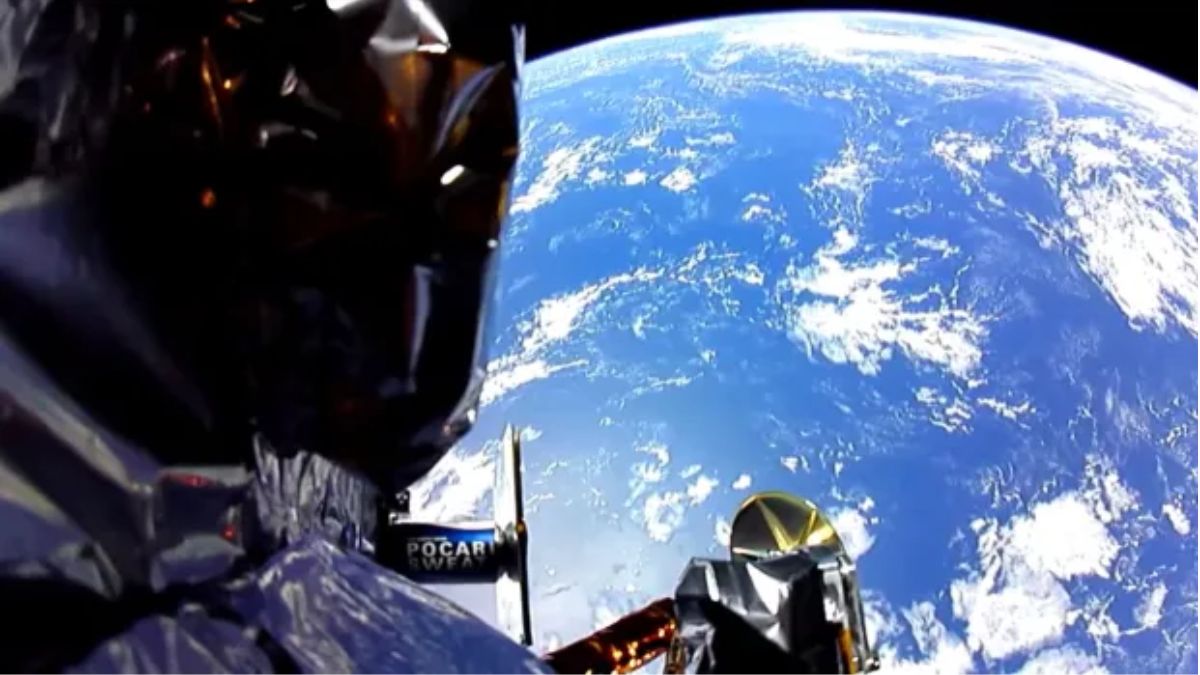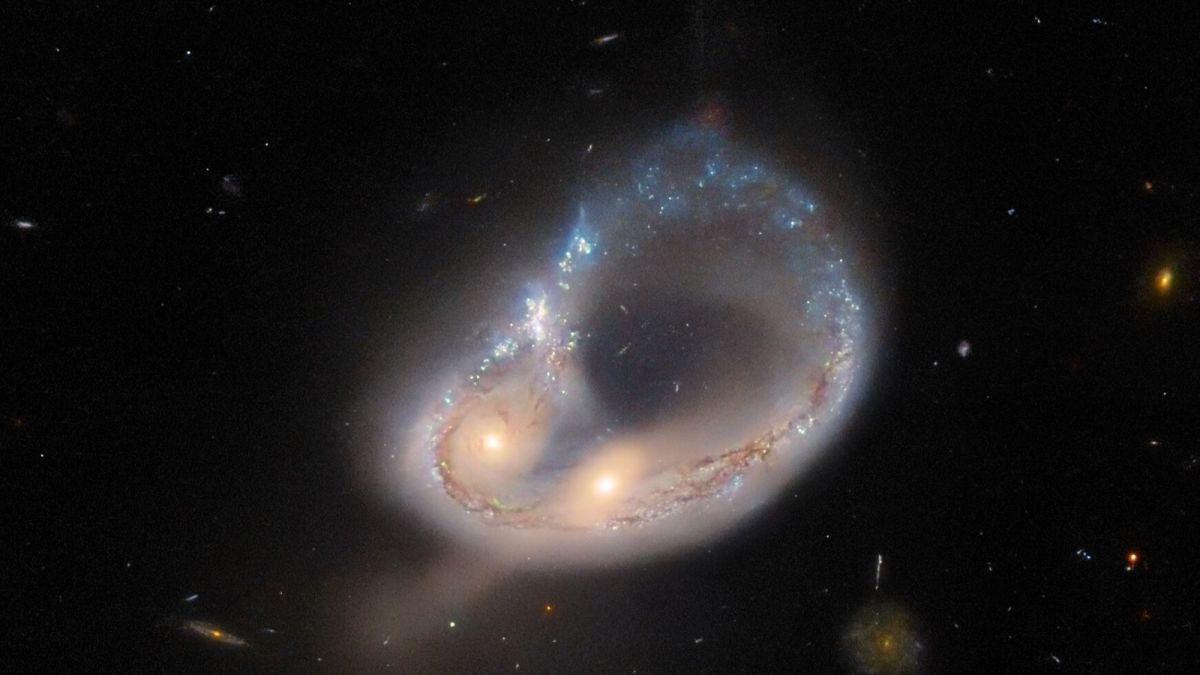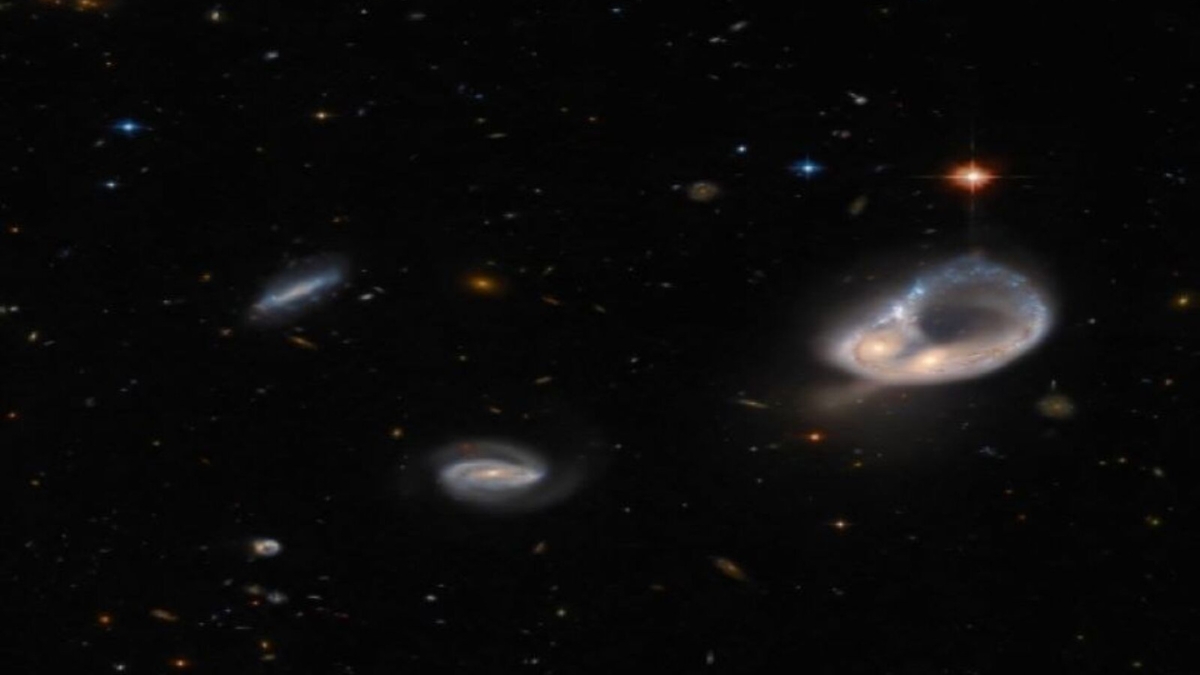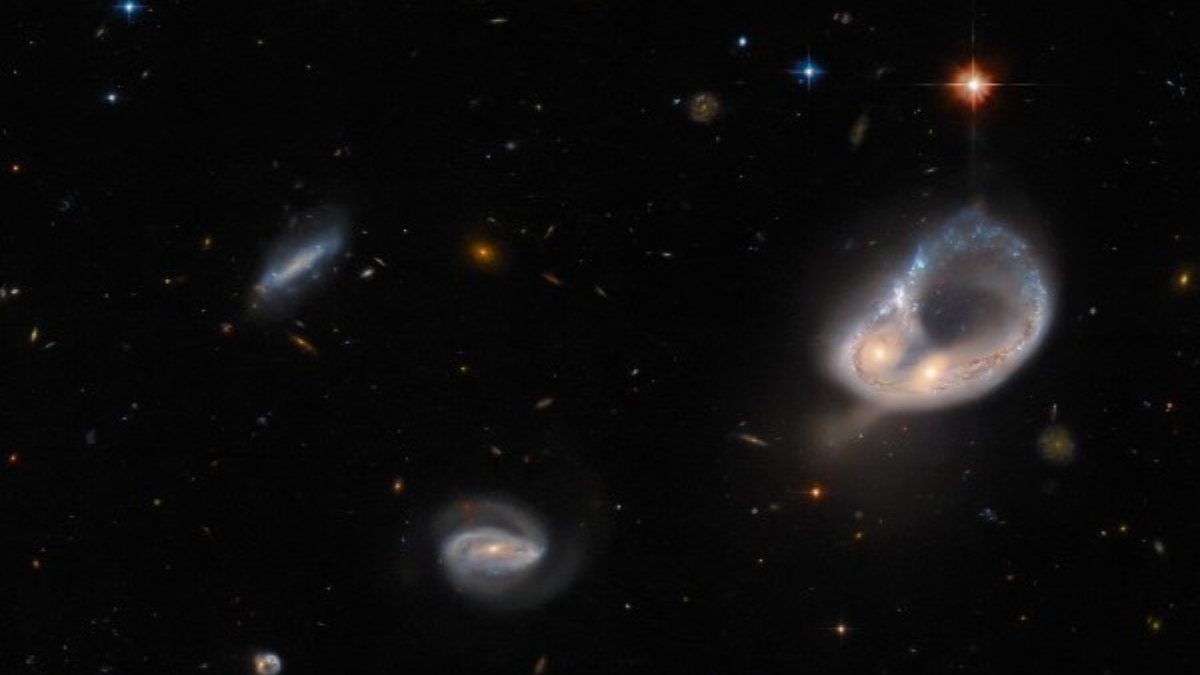
Astrobotic's Peregrine lunar lander encountered bo...
news-extra-space

 image from the NASA/ESA Hubble Space Telescope.[/caption]
Galaxy mergers take place when two or more galaxies are sufficiently close enough to one another for their gravitational fields to interact. One of the galaxies that collide may be completely destroyed, or the two may combine to form a single, larger galaxy. It is believed that the supermassive black holes at the center of practically every galaxy play a role in which outcome occurs.
Due to the strong gravitational forces at play, galaxies can get deformed as they approach closer to one another. Galactic arms may be pushed in a different direction or, as in this instance, may experience even more dramatic distortions. The brightly blazing centers of the two galaxies that are merging have taken the form of a ring, and their supermassive black holes are situated close to one another.
[caption id="attachment_66820" align="aligncenter" width="1200"]
image from the NASA/ESA Hubble Space Telescope.[/caption]
Galaxy mergers take place when two or more galaxies are sufficiently close enough to one another for their gravitational fields to interact. One of the galaxies that collide may be completely destroyed, or the two may combine to form a single, larger galaxy. It is believed that the supermassive black holes at the center of practically every galaxy play a role in which outcome occurs.
Due to the strong gravitational forces at play, galaxies can get deformed as they approach closer to one another. Galactic arms may be pushed in a different direction or, as in this instance, may experience even more dramatic distortions. The brightly blazing centers of the two galaxies that are merging have taken the form of a ring, and their supermassive black holes are situated close to one another.
[caption id="attachment_66820" align="aligncenter" width="1200"] image from the NASA/ESA Hubble Space Telescope.[/caption]
The picture was taken by Hubble's Advanced Camera for Surveys (ACS) instrument, which also used to take some of the space telescope's most well-known pictures, including the Ultra Deep Field picture. ACS operates in the visible and ultraviolet light spectrums. This picture was shot as part of an effort to find fascinating things that could be investigated more thoroughly using equipment like the James Webb Space Telescope.
image from the NASA/ESA Hubble Space Telescope.[/caption]
The picture was taken by Hubble's Advanced Camera for Surveys (ACS) instrument, which also used to take some of the space telescope's most well-known pictures, including the Ultra Deep Field picture. ACS operates in the visible and ultraviolet light spectrums. This picture was shot as part of an effort to find fascinating things that could be investigated more thoroughly using equipment like the James Webb Space Telescope.
Leave a Reply






